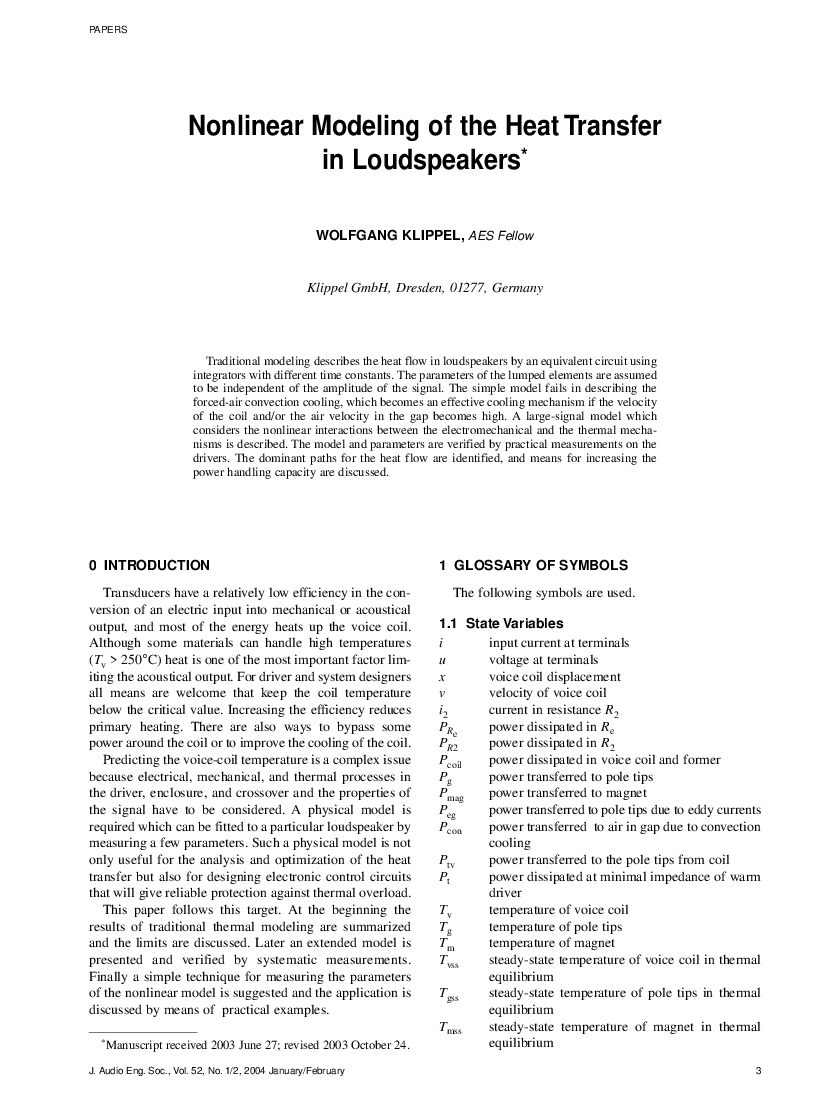Home / Publications / E-library page
You are currently logged in as an
Institutional Subscriber.
If you would like to logout,
please click on the button below.
Home / Publications / E-library page
Only AES members and Institutional Journal Subscribers can download
Traditional modeling describes the heat flow in loudspeakers by an equivalent circuit using integrators with different time constants. The parameters of the lumped elements are assumed to be independent of the amplitude of the signal. The simple model fails in describing the forced-air convection cooling, which becomes an effective cooling mechanism if the velocity of the coil and/or the air velocity in the gap becomes high. A large-signal model which considers the nonlinear interactions between the electromechanical and the thermal mechanisms is described. The model and parameters are verified by practical measurements on the drivers. The dominant paths for the heat flow are identified, and means for increasing the power handling capacity are discussed.
Author (s): Klippel, Wolfgang
Affiliation:
Klippel GmbH, Dresden, Germany
(See document for exact affiliation information.)
Publication Date:
2004-02-06
Import into BibTeX
Permalink: https://aes2.org/publications/elibrary-page/?id=12980
(303KB)
Click to purchase paper as a non-member or login as an AES member. If your company or school subscribes to the E-Library then switch to the institutional version. If you are not an AES member Join the AES. If you need to check your member status, login to the Member Portal.

Klippel, Wolfgang; 2004; Nonlinear Modeling of the Heat Transfer in Loudspeakers [PDF]; Klippel GmbH, Dresden, Germany; Paper ; Available from: https://aes2.org/publications/elibrary-page/?id=12980
Klippel, Wolfgang; Nonlinear Modeling of the Heat Transfer in Loudspeakers [PDF]; Klippel GmbH, Dresden, Germany; Paper ; 2004 Available: https://aes2.org/publications/elibrary-page/?id=12980